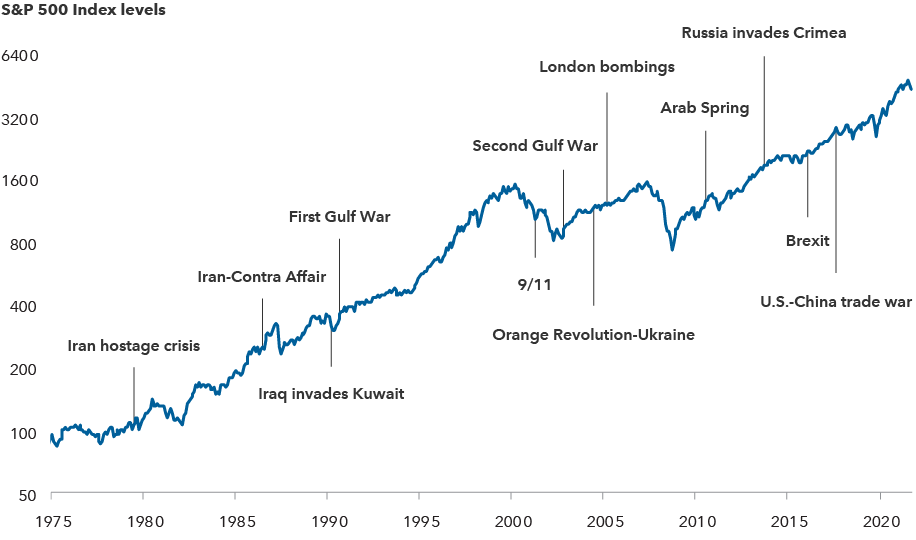-
Financial Goal-Setting Tips to Help Achieve Your Money Goals
Clarity is Key if You Want to Reach Your Personal Financial Benchmarks

When it comes to your money goals, it’s important to focus attention on your short-term and long-term financial goals. Gaining clarity on which of your money goals fit into which category can help you properly budget and save for them accordingly.
Short-Term Financial Goals: The Basics
It may seem self-explanatory, but timelines for your financial goals are on a continuum, so it’s valuable to identify which types belong on your short-term list. Of course, these are the goals that are for your more immediate needs, but that could mean the next few months or the next few years.
As you think about your short-term money goals, here are a few common examples:
- Upcoming life transitions (marriage, new baby, buying a home)
- Saving for your emergency fund
- Paying off debt (credit cards, student loans)
- Travel plans
- Home repairs and improvements
If you don’t see some of your own goals on this list, it doesn’t mean they don’t qualify as short-term goals. As you work on your goal-setting, it can help to think in terms of what you hope to accomplish in the next five years versus what you hope to accomplish beyond that timeframe.
Clarifying Long-Term Financial Goals
Most often, long-term money goals are those “big picture” costs you’re working towards. They won’t be accomplished in months – or even in a few years’ time. Rather, they may take decades to achieve. They also tend to involve higher dollar amounts than your short-term goals.
Here are a few common long-term financial goals:
- Saving for retirement
- Putting your children through college
- Paying off your mortgage
- Starting or buying a business
Keep in mind that, although you will probably be making incremental progress toward these goals on a monthly or yearly basis, they are still long-term because their ultimate achievement is many years away.
Get Comfortable with the Gray Area
It’s easy to confuse your short- and long-term goals when they overlap a bit – which is normal. If it helps you, create a category of midterm goals for yourself, too. These may be goals you hope to achieve in five or ten years, but set the timeline that makes the most sense for you.
These middle-of-the-road money goals may be things like:
- Saving for a down payment on your own home
- Raising your credit score
- Buying a car with cash
- Working toward maxing out your 401(k) contributions
If the idea of midterm goals makes things feel fuzzier for you, rather than providing added clarity, try a different tactic. You can always take pieces and parts of your long-term goals and add them to your short-term list with specific timelines for accomplishment, too.
Estimating Realistic Time Periods
One of the more challenging aspects of financial goal-setting is that many people have a “gap” between when they would like to accomplish a money goal and when it is actually realistic to do so. While some goal periods are difficult to estimate, you’ll help yourself by having a good handle on your financial situation. If you haven’t created a budget yet, make this your first step. Once you know exactly how much you have coming in and how much you’re spending and where, you know how much extra money you have each month to put toward future goals.
For example, you may have a short-term goal to pay off your student loans in five years or less. When you do the math, though, you find that it will actually take you ten years based on your current income, pushing this goal into your long-term category instead. It can work the opposite way, too – you might realize that careful spending will give you enough to make a double mortgage payment each month, effectively cutting your payment timeframe in half. Either way, it’s easy to see how budgeting is a critical step in meeting your goals.
Budgeting and Saving 101
Knowing where you stand is crucial to the rest of the goal-setting process for a few reasons. First, it forces you to come face to face with your spending habits, which may have some room for improvement. Second, it shows you the math – and numbers don’t lie. Rather than setting arbitrary time periods for achieving your money goals, you’ll know what you can actually accomplish.
While there are different methods to use for setting up your budget, many people use a 50/30/20 budget as their baseline. This is where you use 50% of your after-tax income for your needs, 30% for your wants, and 20% for saving or paying off debt. You can use this calculator to get started, or try a budgeting app like Mint or YNAB (You Need a Budget).
Ideally, your budget will show you that you have excess income each month that can go into your savings. So, where should you store your nest egg until you need to use it? For short-term goals like your emergency fund, choose a high-yield savings account that you can access easily and that doesn’t have a minimum balance requirement. For midterm savings, you may be best served by a Series I Bond. For long-term savings, say for retirement, you want a tax-advantaged account like an IRA or 401(k).
Setting Financial Goals
Most people have multiple short- and long-term financial goals, and it’s impossible to give equal weight to all of them with limited resources. So, think about which goals help you fulfill a need versus those that help you fulfill a want. Even though it may be tempting to put more toward your vacation fund for next year, failing to put enough into your retirement savings could mean you can’t pay your bills once you retire. So, allocate your money toward your needs first – regardless of their timeframes – and then you can allocate the rest of your funds toward your wants.
Take Action
If you think you would benefit from a conversation about setting financial goals, contact Lane Hipple in Moorestown, NJ by calling 856-638-1855, emailing info@lanehipple.com, or to schedule a complimentary discovery call, use this link to find a convenient time.
If you like what you’ve read, please share this article.
More Articles:
- National Retirement Planning Week
- Maximizing Charitable Giving: Strategies for Making an Impact
- The Excise Tax Waiver Has Expired for 10-Year IRA Beneficiaries with Annual RMDs
- Employee Stock Ownership Plans for Executives
- Love and Money: What to Do When Your Spouse Won’t Talk About Finances
Illuminated Advisors is the original creator of the content shared herein. I have been granted a license in perpetuity to publish this article on my website’s blog and share its contents of it on social media platforms. I have no right to distribute the articles or any other content provided to me, or my Firm, by Illuminated Advisors in a printed or otherwise non-digital format. I have no right to distribute the articles or any other content provided to me, or my Firm, by Illuminated Advisors in a printed or otherwise non-digital format. I am not permitted to use the content provided to me or my firm by Illuminated Advisors in videos, audio publications, or in books of any kind.
-
Housing Market Continues To Cool Off

What a change we have seen in the housing market in just the last two months. Mostly due to the 2022 usual suspects: historically high inflation and rising interest rates. In the first quarter, while interest rates and home inventories were still very low, buyers were flooding the housing market to pay top-dollar under previously unthinkable terms. To win a bid, buyers were making cash offers and waiving inspections, sometimes without even stepping foot on the property!
According to Zillow, the typical New Jersey home value in April 2022 was $454,982. This value is seasonally adjusted and only includes the middle price tier of homes. That represents a 15.9% increase over the past year.
Since the start of the year, however, mortgage rates have crept higher and higher, but that didn’t seem to scare off buyers until the Federal Reserve began increase the United States Fed Funds Rate in March.
2022 Mortgage Rates
source: tradingeconomics.comThe increasing home prices, combined with higher interest rates, have finally shrunk demand for new homes. According to Census Bureau data released on May 24th, new-home sales fell 16.6 percent in April, leaving the inventory of newly built homes to jump sharply to a nine-month supply. The new construction industry is considered to be balanced between buyer and seller when there are only enough unsold new houses to match six months of sales.
Home building stocks have taken a hit as a result of this change in the housing market. Specifically, the SPDR Homebuilders ETF (XHB) has dropped 30% since December of 2021.
If you have reason to believe this news will impact your financial strategy or retirement plan, please contact Lane Hipple today!
-
Capitalize on Inflation with I Bonds

New data from the Consumer Price Index for Urban Consumers (CPI-U) shows a higher-than-expected inflation rate in April. Over the last 12 months, the average change in the prices paid by urban consumers for goods and services was 8.3% higher. As of this writing, the Dow Jones Industrial Average and the NASDAQ have each shed over 6% of their value over the past 5 days. Investors are looking for investment alternatives that can return something in this market environment. Here is why we see Series I bonds as a potential suitable investment that is attractive right now.
The interest is derived from a combination of a fixed rate and a variable inflation rate tied to CPI-U. Therefore, as inflation rises or falls, the interest rate will increase or decrease. It is set twice a year for a six-month period, and right now, any I bonds issued between May and October 2022 earns interest at 9.62% annually.
Read more about Series I bonds here
Although these are 30-year bonds, owners can redeem them after twelve months. There is a $10,000 purchase limit per person per year and they must be purchased direct from the Treasury Department. Additionally, if you earned a federal income tax refund, you can elect to use it to purchase up to $5,000 of paper I bonds. Lane Hipple cannot purchase I bonds for you, therefore, if you feel this is ideal, then you must purchase the bonds yourself from the Treasury.
To purchase or learn more, please go here https://www.treasurydirect.gov/indiv/research/indepth/ibonds/res_ibonds.htm
-
Stock market pullback puts spotlight on Roth conversions

You may have heard the strategy, “buy the dip”, but do you know how to “convert the dip”? That is a maneuver some financial planners are educating their clients on to maximize tax benefits. A Roth IRA conversion involves the transfer of assets from a traditional, SEP, or SIMPLE IRA, or from a defined contribution plan like a 401(k), into a Roth IRA. To convert, the account owner pays a one-time income tax on the amount transferred and the account becomes eligible to make tax-free withdrawals in the future. As a result, the Roth IRA is now growing tax-free. The following article from InvestmentNews.com, written by Jeff Benjamin, explains why now may be the right time to convert.
Click to Read Article
-
7 Investment Trends for 2022
Equity markets have historically powered through geopolitical events

Sources: Capital Group, Refinitiv Datastream, Standard & Poor’s. Index levels reflect price returns, and do not include the impact of dividends. Chart shown on logarithmic scale. As of 2/28/22. Standard & Poor’s 500 Composite Index is a market capitalization-weighted index based on the results of approximately 500 widely held common stocks.
It may be easy to feel overwhelmed by news headlines and stock tickers on a daily basis, however, it is important to pause, take a breath, and gain some perspective to the long-term trends that are driving companies and markets. Historically, economic and geopolitical turmoil have not be able to outlast patient, strategic financial planning. In other words, in any market condition, there are always investment opportunities. You just need to know where to look. That is why we have summarized for you a recent article from Capital Group to provide some insights into 7 investment trends for 2022.- Pricing Power – With inflation hitting record levels, investors should be looking at companies that can sustain their profit margins by passing the increased cost of goods sold along to customers. Certain industries have an easier ability to accomplish this. Pharmaceutical and biotech companies like Pfizer and UnitedHealth will always be in high demand. Business with strong brand recognition, like Keurig Dr Pepper and Coca-Cola, carry less risk of losing customers over increased prices.
- Technology – While many consumers are complaining about supply chain issues, chipmakers like Advanced Micro Devices, Samsung, and ST Microelectronics are benefiting from sky-high demand. Many businesses are turning to cloud technology to power their operations, making semiconductors, legacy software, and software-as-a-service (SaaS) one of the fastest growing industries of the last decade. That does not look to be slowing down any time soon.
- The Return of Dividends – During the pandemic, some companies – particularly in Europe – suspended dividends primarily due to political or regulatory pressure. As a result, many of them have surplus capital to redeploy as regular and catch-up dividends. Don’t be so fast to snatch up the highest yields because research conducted by Capital Group shows that since 2007, the highest yielding quintile of stocks had the lowest overall returns. It is still wise to find companies focused on sustained, earnings-based dividend growth over the long-term because it offers a measure of resilience against inflation and interest rate hikes – two events the United States is currently experiencing.
- Healthcare – Although it’s satisfying to refer to the pandemic in past tense, we are not out of the woods yet, which means innovation in health care remains a top priority. The speed at which Pfizer and Moderna developed and deployed their vaccines is an indication of the strength and commitment to discovering new drugs, therapies, and improved diagnostics. According to the Food and Drug Administration, in the last 5 years the FDA has approved, on average, 75% more novel drugs than in the previous nine years. In addition, as technology improves, remote patient monitoring and home diagnostics are becoming part of the continuum of care.
- Transportation – This sector is moving faster in favor of electric vehicles (EVs), due mostly to government incentives and more strict emissions standards for gas-burning cars. Companies are competing for market share with lower prices, better performance, and longer range. The inclusion of software has given vehicles the ability to learn and improve over time through wireless updates. Most exciting (or unnerving, depending on who you ask) is the advancements in the autonomous vehicle industry. Alphabet’s Waymo operates a fully functional robotaxi service in Arizona open to the public. General Motors’ Cruise intends to launch their fully driverless robotaxi service in San Francisco before the end of this year. Self-driving truck startup TuSimple completed an industry first 80-mile autonomous truck ride on public roads with no human in the cab and zero interventions required.
- Media Disruption – The fast-growing segment of the media sector is gaming. Interactive video game companies like Microsoft and Sony are big reasons why this $200 billion industry has surpassed the movie industry in terms of annual gross revenue. In another segment, Netflix continues to get punished by investors for its massive subscriber loss. In Q1, Netflix loss over 200,000 subscribers – the first quarter they have lost subscribers since 2011. For those hoping for a bounce back, the streaming entertainment company anticipates losing 2 million more subscribers in the 2nd quarter!
- Flexible Fixed Income – As mentioned earlier, inflation can lead to increased profits for companies able to pass the additional cost of goods sold to customers. The economy is doing well because more people have jobs and cash they’ve been sitting on throughout the pandemic. Consumer demand is very high and that bodes well for companies with strong balance sheets and a comprehensive growth plan. That is why corporate bonds may be a worthwhile venture and, more specifically, high yield and securitized debt bonds because of their shorter interest duration and the economy’s overall strength.
Don’t allow short-term events around the world derail your financial plan. Focus on your long-term objectives and speak with your Certified Financial Planner to strengthen your portfolio. Perhaps it will result in following one of these trends of 2022.
- Pricing Power – With inflation hitting record levels, investors should be looking at companies that can sustain their profit margins by passing the increased cost of goods sold along to customers. Certain industries have an easier ability to accomplish this. Pharmaceutical and biotech companies like Pfizer and UnitedHealth will always be in high demand. Business with strong brand recognition, like Keurig Dr Pepper and Coca-Cola, carry less risk of losing customers over increased prices.